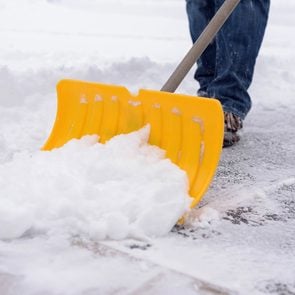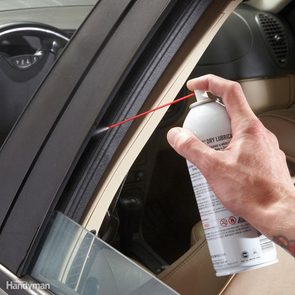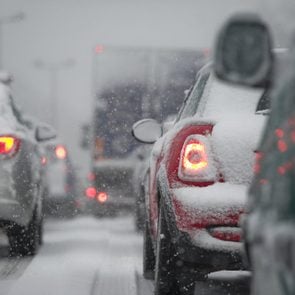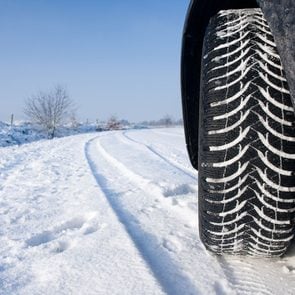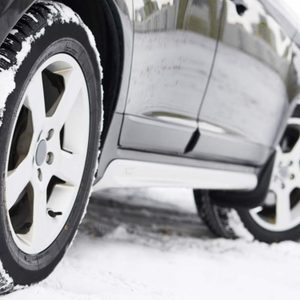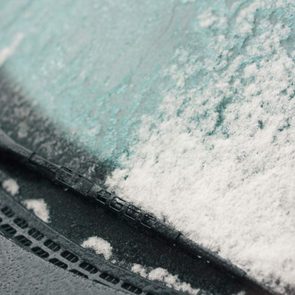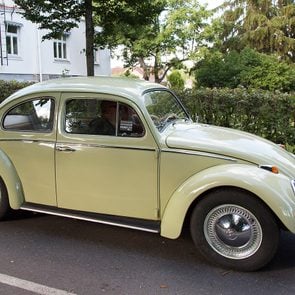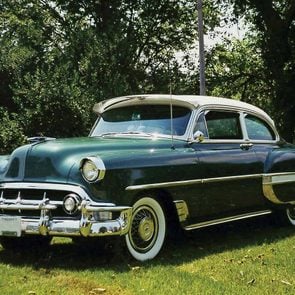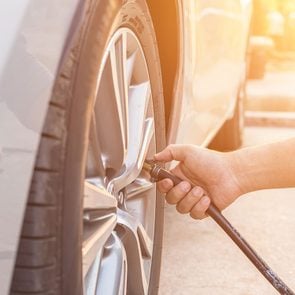Your sore back is screaming for a break from shovelling your driveway for the 10th time in two weeks. Or, perhaps you’re tired of bundling up in all those layers and snowplowing the driveway, only to do it all over again tomorrow. If you’d invested in a heated driveway, you could be cozy and warm right now… But what’s involved in getting one installed, and how much is it going to set you back? Let’s take a look at the pros and cons.
Types of Heated Driveways
There are two systems available for heating driveways: A water-based hydronic system or an electric system. Electric systems are more affordable to install since you don’t need to purchase a boiler to heat the water. However, the cost of operating an electric system is higher.
Installing a hydronic system involves putting in PEX tubing under the driveway’s surface. The tubing is filled a non-freezing water solution that circulates through the boiler which is generally placed in the garage.
Electric systems use heating mats and cables, in a grid pattern, installed under the driveway’s surface.
Neither system requires much maintenance, although if you go with a hydronic system, have the boiler inspected once a year.
How Much Does a Heated Driveway Cost?
While heated driveways will help you save on snow removal and damage often caused by salt and ice melting products, they are pricey to install.
Expect to pay $16,000 or more to install a heating system for an average-size driveway if the existing driveway needs to be removed to install the system. If the system is installed during new construction, it will cost less.
You’ll also want to factor in that you’ll pay more in utilities because the systems use gas or electricity to operate.
However, if installed correctly, you’ll get about 20 years of use from a heated driveway before it needs replacement. That’s a lot of shovelling and snowblowing you won’t have to do!
Next, make sure you avoid these common snow removal mistakes.
Born in 1819 in Westmoreland County, England, to Irish parents, Henry and Mary, my great-great-grandfather, William Bunton, immigrated to Upper Canada in 1832. They settled in Wellington Square, now Burlington, Ontario, where Henry became an innkeeper in Nelson County.
In 1844, William married Elizabeth Bates Reynolds with whom he had eight children. The oldest was a daughter, Sarah, my great grandmother. In the 1851 Province of Ontario directory, William is listed as a general merchant and provision dealer. His general store, later owned by John Waldie, was at the northeast corner of the present Lakeshore Road and John Street. He was well-known in Wellington Square in many capacities. He subdivided and sold lots in Bunton’s survey, which stretched from Lakeshore Road north to Ontario Street, and from Locust Street to St. Luke’s Church Avenue. He was also a prominent grain and lumber merchant.

In those days, roads were little more than trails through the bush, so in order to move merchandise to Great Lakes ports, William ordered the construction of two two-masted sailing ships, the Azov in 1866, and the Sweepstakes in 1867, in partnership with John Waldie. They were built by master shipbuilder, John Simpson.
Across the road from the general store was the Bunton family’s lovely brick home, called The Four Oaks, since there were four large oak trees in line along the stone fences. Beside his home was William’s office from which he carried on his business. Since the back of the property bordered on Lake Ontario, he also built a wharf to which he tied his two sailing vessels. Even a century later, the remnants of that wharf were still in evidence.
Although I am unable to confirm it, there is a very great possibility that The Four Oaks later became Oak Bank Inn, a successful business that offered rooms, as well as a varied menu in the dining room. Because of its location on old Highway 2, the motoring public were able to buy gas and oil as well.

For 18 years, William’s two ships hauled cargo, such as lumber, grain, rail ties and coal, to and from Great Lakes ports. Around 1880, he relinquished ownership of the vessels. In 1911, the Azov sprang a leak. The crew managed to abandon ship, but she capsized, and later came ashore near McGregor Point, where the elements broke her to pieces where she lay. An interesting piece of memorabilia is the 15-foot helix sculpture made from the giant anchor chain of the Azov, which now resides in the Bruce County Museum in Southampton, Ontario.
On the other hand, the Sweepstakes hit a rock near Cove Island in 1885, and sank into shallow water near the light station. She remained there until she was towed into Big Tub Harbour, where she was found to be beyond repair, and the nearly intact hull sank into six metres of water. Although deteriorating a little more each year, the Sweepstakes is one of the best preserved Great Lakes’ schooners to be found.
William’s first wife died at age 40. He later remarried Clarissa Jane Bastedo, and they had four more children before she died of diphtheria. He and his third and final wife, Alexandrina Cameron, had no children together. On a sad note, in 1871, William’s 17-year-old son, Walter, drowned near Buffalo. Walter had been a member of the ship’s crew on the barque, Maria Martins. On the day of the funeral, all the businesses of Wellington Square were closed out of respect for this popular citizen’s sad loss.
In 1879, William left his hometown to go to Oil City/Bradford, Pennsylvania, to speculate and invest in oil. While touring some of his wells in 1881, there was an explosion that killed four men instantly, including William. And so my great-great-grandfather’s body was brought back to Wellington Square and buried in the family plot in the cemetery at St. Luke’s Parish Church.
Burlington has grown and changed over the intervening years. The Four Oaks and the story of William Bunton is just a part of our family history now. His oldest daughter, Sarah, married and gave birth to my grandmother, Louise Husband Johnston.
Possibly the only tribute to one of the region’s most prominent citizens of the past in existence today is an aptly named condominium, Bunton’s Wharf.
Next, check out the haunting stories behind Canada’s most famous shipwrecks.
Google “oldest tree in Canada” and there’s seemingly no end to the returned results, documenting everything from ancient Douglas firs and limber pine, to yellow, red and eastern white cedars. So, where exactly is Canada’s oldest tree? And why does it matter?
The search for the oldest tree in Canada
“Not just in Canada, but around the world, people fight over this, so there’s an emotional component to have found the oldest tree,” says Doug Larson, professor emeritus at the University of Guelph’s department of integrative biology. But the biggest mistake people make, says Larson, is assuming that a big tree is an old tree. “For every species that I know, the oldest member of that species is not very big because they have suffered poor conditions [over their lifespan], but they have adjusted their physiology so that they can survive.”
Since we can’t use a tree’s size as an indication of its age, this presents a challenge, since the only real measurement left is to look at a tree’s rings—the concentric circles you see on a stump when a tree’s been cut down. If you’re looking at a stump, though, you’re unfortunately finding out the age of Canada’s oldest dead tree.
The “Old List”
In B.C., where many people picture old-growth trees in lush coastal rainforests, one of the oldest on record is a yellow cedar that lived to be 1,835 years old. It was discovered as a stump left over from a clear cut in 1980, making it possible to count its rings.
But only two of the 16 Canadian trees on the Rocky Mountain Tree-Ring Research “OldList,” a nonprofit research group that tracks old trees around the world (it lists 140 in total), are from B.C. The rest hail from Ontario, Alberta, Yukon and New Brunswick.
To find out a living tree’s age, Larson says you need an increment borer—a tool that essentially performs a biopsy so you can count a tree’s rings without cutting it down. Using this method, he believes he’s found evidence of the oldest living tree in Canada in 1988—an Eastern white cedar that started growing in the year 688 in Lion’s Head Provincial Park in Ontario, making it 1,334 years old today. (The tree’s location isn’t disclosed—if it’s discovered by tourists, he says, it’s unlikely to stay undisturbed.)
“We were not particularly interested in the question of the ‘oldest known living tree’ in the country. But people…keep asking,” says Larson. “If there are any other living trees that can be properly aged and are older, that would be something to cheer about!”
While Larson is proud, he says old trees are more than just a competition. “If we allow forests to grow, then we are basically using the forest as a sponge of the carbon dioxide that we are spewing into the atmosphere.” Old-growth forests have been accumulating carbon for years, in a way that new trees just can’t catch up to, which is why it’s important to leave them intact. Essentially, as trees get older, their carbon absorption rates accelerate.
The power of all old trees
Eric Davies, a forest ecologist, agrees. He says chasing a number, like finding the oldest tree in Canada, “Can lead you to these little glory postage stamps that are more about age…as opposed to the health of the landscape.”
Davies says that old trees are important, even in urban areas like Toronto, because they’ve adapted to local conditions: water chemistry, soil, weather and even the herbivores that munch on them. Their seeds contain genes that produce offspring that can successfully grow in the same conditions. He notes that trees in North America have large ranges, so the same species that grows in Toronto can grow in, say, Tennessee—but only one has the right genetic code in its seeds to thrive north of the border.
While there’s something rewarding about being able to say you’ve found Canada’s oldest tree, old trees are everywhere and, ecologically, that’s more important than record-breaking.
As Davies points out, “You look right in your backyard sometimes and there’s some really ancient stuff.”
Next, check out the 10 national parks every Canadian needs to visit.
The cell phone’s job description has gotten a few pages longer in recent decades. Just 20 years ago, there would be only a handful of expectations for the device, namely, to send and receive cellular calls and SMS messages.
The modern smartphone blows any old Nokia out of the water, but it still has a pretty major flaw. When it gets a little too brisk outside, it shuts down entirely. But why? As LiveScience reports, it all comes down to chemical reactions within the battery.
Why your phone battery dies in cold weather
If you were to crack open any given smartphone, you’d probably find a lithium-ion battery running the show. Inside of the battery, there are two poles, an anode and a cathode, and how much charge your phone has all depends on which side the ions reside. A fully charged battery will be jam-packed with ions on the anode end, while a dead battery will have all the ions deposited in the cathode end.
Your phone is powered as the individual ions travel in solution from one pole to the other, but a cold temperature doesn’t “drain” your battery, per se. If it were drained, the ions would have to go somewhere, but they actually stay put when it gets cold. The cold temperature causes chemical reactions that slow down the current. The only other time this smaller current is sent through the battery is when all the ions have been spent, so your phone mistakenly reads the slowdown as the cell being out of juice.
Now, how can you get yourself out of this battery bind? Dr. Stephen J. Harris, a chemist at the Lawrence Berkeley Lab, says whatever you do, don’t try and charge it. Your fully charged battery isn’t lacking ions, and the cold temperature isn’t allowing more ions to be pulled into the anode. They pass through the solution as solid lithium, which can really do some serious damage to the battery cell itself.
The only way to get that battery back to its toasty current-catalyzing self is to let it return to its normal operating temperature. LiveScience recommends leaving it in your pocket or spending a few minutes inside away from the blistering cold.
[Source: LiveScience]
Next, find out why you need to stop charging your phone overnight.
Nothing’s worse than having to wake up early on a snow day to clear the buildup off your car. But if you’ve got to do it, you might as well do it right and do it fast. Here’s how.
How to Remove Snow From Your Car Quickly
Step 1: If you park your car in the driveway, prepare for the storm before it starts by backing out as close to the street as possible (without blocking the sidewalk, of course). That way, you’ll have less driveway to shovel out in order to get on the road.
Step 2: Shovel the wheels out before moving on to the rest of the driveway. While you’re focusing on the lower half of the car, check that your tailpipe is clear of snow. A blockage could cause deadly carbon monoxide gas to fill the interior once the car is turned on. (Find out more winter driving mistakes that could put you in danger.)
Step 3: Grab a foam brush or non-abrasive snow broom and start removing snow from the car gently. “Common damage from improper snow removal are scratches in the paint,” Bryan Burgess, owner of a detailing shop, told cars.com. “These could be light or very deep depending on the situation. A nylon brush for example over the paint may leave light scratches that will be visible once the car is clean on a sunny day. Remove the snow with a shovel—I’ve seen it done—and you’re at risk for a very deep scratch that is either beyond a simple repair or would require a repaint.” (These car scratch repair tips might come in handy.)
Step 4: Start from the roof of the car and work your way down to the windows, hood, trunk, rear and front lights. Pull the snow off the car, don’t push it. And keep your swipes in a straight line. That way, if an accidental scratch does occur, it will be less apparent.
Step 5: Don’t feel you need to get every last bit of snow off the car. It’s alright to turn on the heat and defroster and let modern technology do the rest. If it doesn’t clear off, though, you’ll want to get back outside and finish the job. Driving with snow on the car is dangerous (and in many cases illegal).
Now that you know how to remove snow from your car, take a look back at the worst snowstorms in Canadian history.
My dad has three great passions in life: family, cars and fighting forest fires. It’s not unusual for those passions to overlap, such as when he would help out one of his three kids with an oil change or a small repair on their personal vehicle, or when he watched my brother and I follow in his footsteps and work seasonally in the wildfire branch. Nevertheless, the restoration project of his 1968 Fargo Power Wagon was the first thing to meaningfully combine all three of those passions, making it so much more than a simple fixer-up story.

The story begins as many do, with the Internet. My dad had just finished up an 18-day shift on the 2017 Kenow Wildfire in Waterton, Alberta, and was partaking in his hobby of looking up old cars and trucks for sale online before heading back home. Inspired by what he had been doing for the last two and a half weeks, he decided to search “Alberta Forestry Truck,” not expecting to see anything memorable. But, as luck would have it, in the nearby town of Vulcan, someone was selling just that! As soon as he could, he went to visit the 1968 Fargo which, according to its owner’s manual and unit numbers, had been purchased by the Alberta Forest Service in July 1968 and used as a ranger vehicle in northern Alberta up until 1984.

Now, my dad had seen a lot of old forestry trucks in his career and was not even in the market for a restoration project, but as soon as he saw that truck, he felt that it was special. Maybe it was the fact that this truck was an exceptionally rare find, as less than 300 were made in Canada in 1968, or perhaps because my grandfather had owned a very similar truck, which my dad had learned to drive on. Whatever it was, he knew that he should be the one to continue the Fargo’s legacy.

Fixing up the truck turned out to be a laborious and rewarding task. Though the truck came in complete shape, it had been neglected for some time, making for lots of little “gremlins” to deal with, as my dad would call them. Plus, the truck was 50 years old, so the technology was completely different from the vehicles that my dad was used to working on. Despite all this, he was determined to get the truck back into appreciable order. He took a welding course to learn how to repair and rebuild the rusted-out sheet metal and searched out an entire community of vintage truck enthusiasts to learn how to renew every part of the truck.

The day he got the truck running again was a momentous one for all of us, as we had all believed in his progress since the beginning. The greatest challenge came in spring 2019, when my brother asked my dad if he could be driven in the Fargo to his high school graduation. While the truck was drivable at this point, it was not road-ready, especially for downtown Calgary. Still, my dad knew that it was possible, and along with the whole family’s help made it so that my brother had the most suave ride to his graduation. Today, I watch as my dad drives the Fargo to work, continuing to keep the public service legacy of the truck alive and introducing a new generation to the rich history that it holds.
Next, find out how the restoration of this 1930 Cadillac sedan became a family affair.
If you’ve ever driven by a car dealership and seen the rows and rows of brand new cars, you’ve probably wondered what happens to the ones that never get sold. Where do they all go when it comes time to make room for the newest models? Dealerships won’t just give the unsold cars away for free, though. Things are a little more complicated than that.
Car dealerships are franchises. That means they buy new cars from the manufacturer and sell them at a higher price to make a profit. Therefore, once the dealership buys those cars, they belong to them. They can’t just send the unsold cars back to the manufacturer at the end of the year. In order to make money, they have to get customers to buy them.
There are a few options for the dealership when their cars don’t sell. They can ship the unsold cars to a different market where the specific model might be in demand. “For example, a city Toyota dealer with a Toyota pickup may trade it with a small town Toyota dealer who needs it,” George Iny, president of Automobile Protection Association told The Globe and Mail.
The cars can also be sold at auction, but that forfeits some of the sale to an auction house, which means the dealership would lose a lot of money since the car would already be discounted. Another option is that the cars can be used as a loaner car when people bring theirs in for service.
The final option is to price the cars to sell. Something to keep in mind when buying a car is that carmakers and dealerships want to get rid of inventory so older cars aren’t competing with newer models. Iny suggests purchasing a car in the fall because that’s when dealerships push to get last year’s cars sold.
So, all of the unsold cars can actually benefit the buyer, but before you go to purchase a new set of wheels, make sure you know how to outsmart a car dealer.
Cars typically require a tire pressure of 30 to 35 psi (pounds of force per square inch). The recommended psi for your car is the ideal tire pressure year-round; there aren’t different numbers for summer or winter. The temperature does affect tire pressure, however. So when the temperature drops, you might be inflating your tires more often to maintain ideal pressure.
How Does Cold Weather Affect Tire Pressure?
When outdoor temperatures drop significantly, so does the pressure in your tires. When it’s hot outside, warmer air molecules in the tire move around faster and bump into each other more, raising the tire pressure to a potentially overinflated level. When the temperature drops, the air molecules slow down and stick together, resulting in a drop in air pressure and a potentially underinflated tire.
Many tire manufacturers, such as Firestone and Goodyear, estimate that tires lose one psi for every 10 degrees Fahrenheit (approximately 6 degrees Celsius) the outside temperature drops. If your car has a Tire Pressure Monitoring System, the warning light will be triggered by at least a 25 per cent drop in tire pressure. (Take this quiz to see how well you can decode dashboard warning lights.)
Checking Tire Pressure
Check your tires when your car has been parked for at least three hours. (Driving raises the air temperature and therefore the air pressure in the tires.) Your car’s ideal tire pressure is usually listed inside the driver-side door. Be sure to check the recommended pressure for the front and rear tires in case they’re different.
Insert a pressure gauge into the tire air valve swiftly and firmly for an accurate reading. Then immediately replace the air valve cap to avoid letting out any air. If your tires are below the recommendation for your car, use an air compressor to inflate them until you get the right reading.
It’s best to check your tires once a month, but during the winter you might need to check them more often. Other signs that your tires might be underinflated: They look flatter than usual; the steering wheel shakes; or it takes longer to come to a stop when braking.
Don’t Be Tempted to Drive on Underinflated Tires
There’s a school of thought in snowier locales that underinflated tires are better for driving on snow because the tires will make more contact with the surface. While that’s technically true, it’s never safe to intentionally drive on underinflated tires. Driving on underinflated tires makes you three times more likely to be in a collision related to tire issues, according to a 2012 study by the National Highway Traffic Safety Administration. Properly inflated tires handle better, save gas and last longer.
Now that you know the ideal tire pressure in cold weather, find out what those numbers on your tires really mean.
Scrambled eggs seem like such a basic breakfast recipe, but it’s surprisingly easy to get them wrong. Leave them in too long or use the wrong heat, and suddenly the restaurant-quality dish you had in mind has turned into a disappointing pile of dry, rubbery eggs.
Scrambling eggs without any extra liquid can turn out fine if you do it right. Preheat your pan on medium, whisk your eggs before adding them, and then stir frequently once they’re in the pan. But adding a little something extra can give your eggs an ultra-silky texture.
You’ve probably grown up adding milk to your scrambled eggs before cooking. To be fair, whole milk can add creaminess and nice colour to your breakfast, but a different ingredient can do an even better job of stepping up your breakfast game. (Try these brain-boosting breakfast recipes.)
Apparently, whisking in a dollop of sour cream for every two eggs in the bowl will give the absolute best texture. “Many people add milk or half-and-half to their eggs before they put them in the pan,” writes Joanna Saltz for Delish. “But sour cream offers that same creaminess, but with a little more body.”
If that doesn’t convince you to try, maybe the backing of Michelin-recognized chef Justin Ferguson will. Adding sour cream instead of milk into eggs “makes them creamy and richer without diluting the eggs’ bright, yellow colour,” he tells Refinery29.
For the best results, full-fat sour cream will give a richer texture than low- or non-fat versions, according to The Kitchn.
Next, find out the cooking mistakes everyone makes with eggs.
